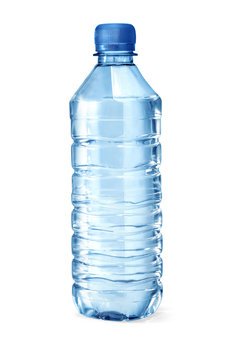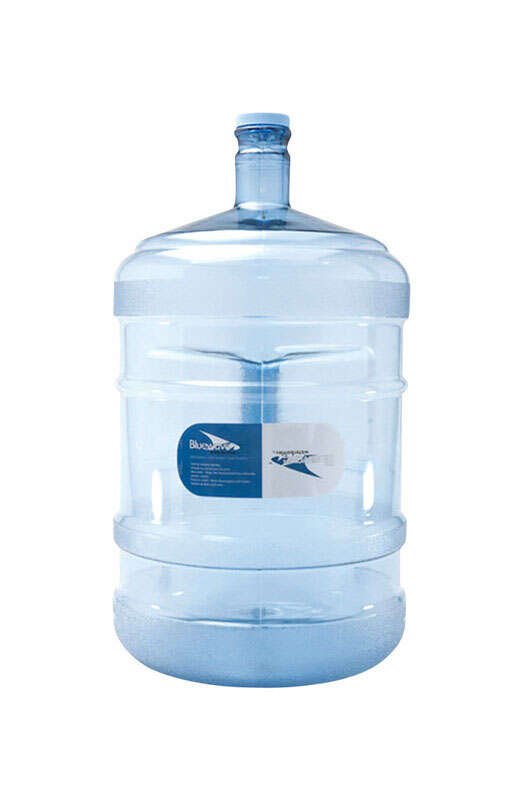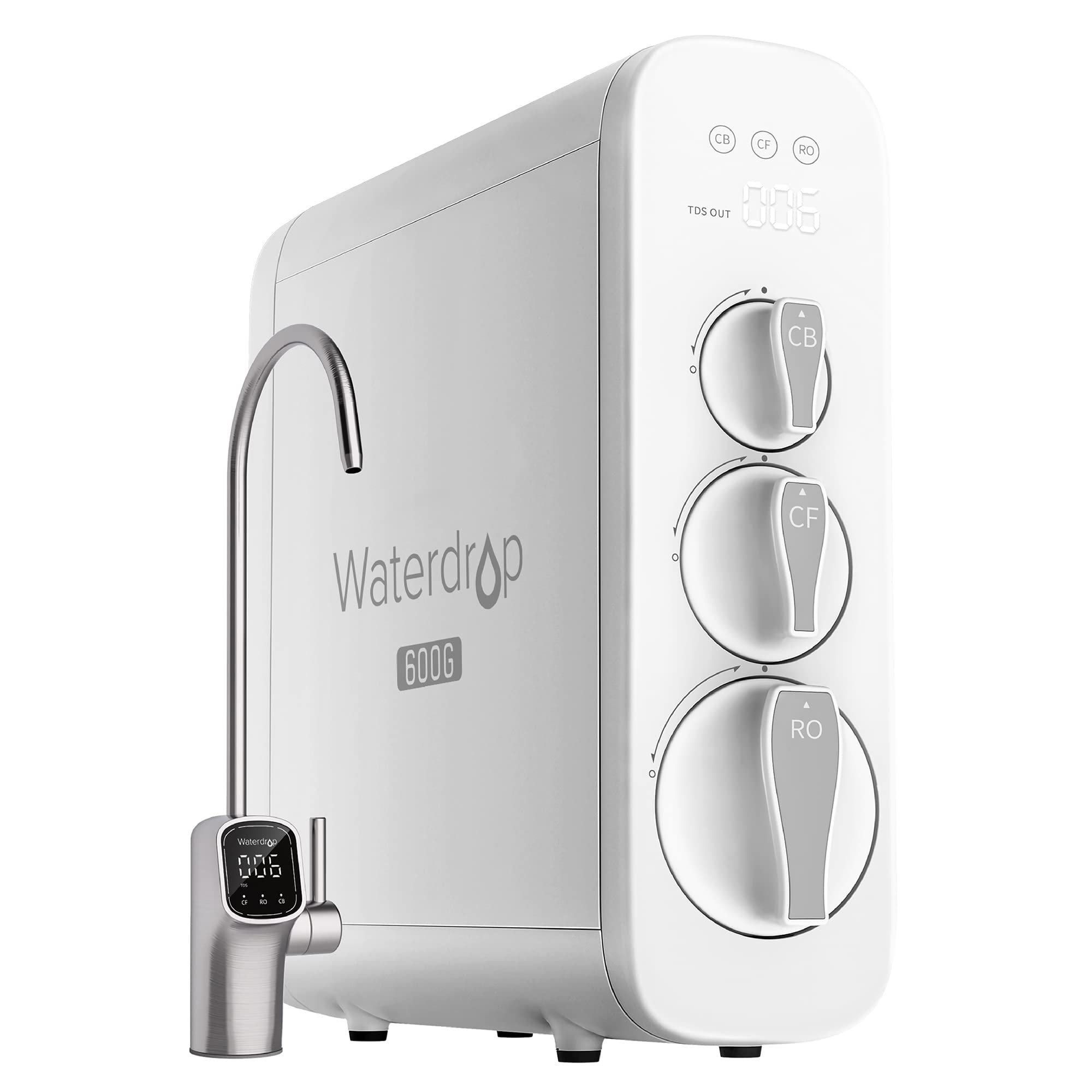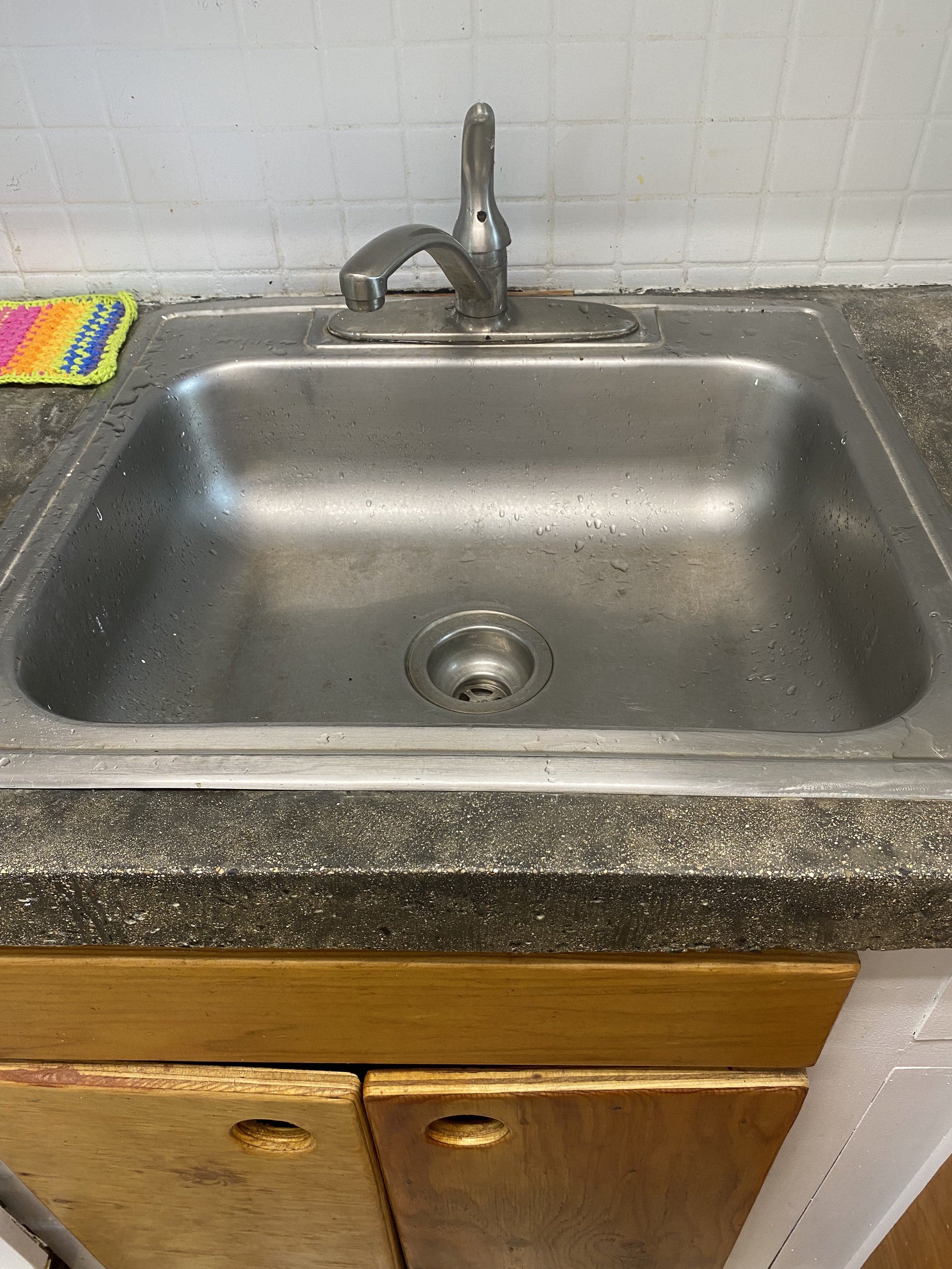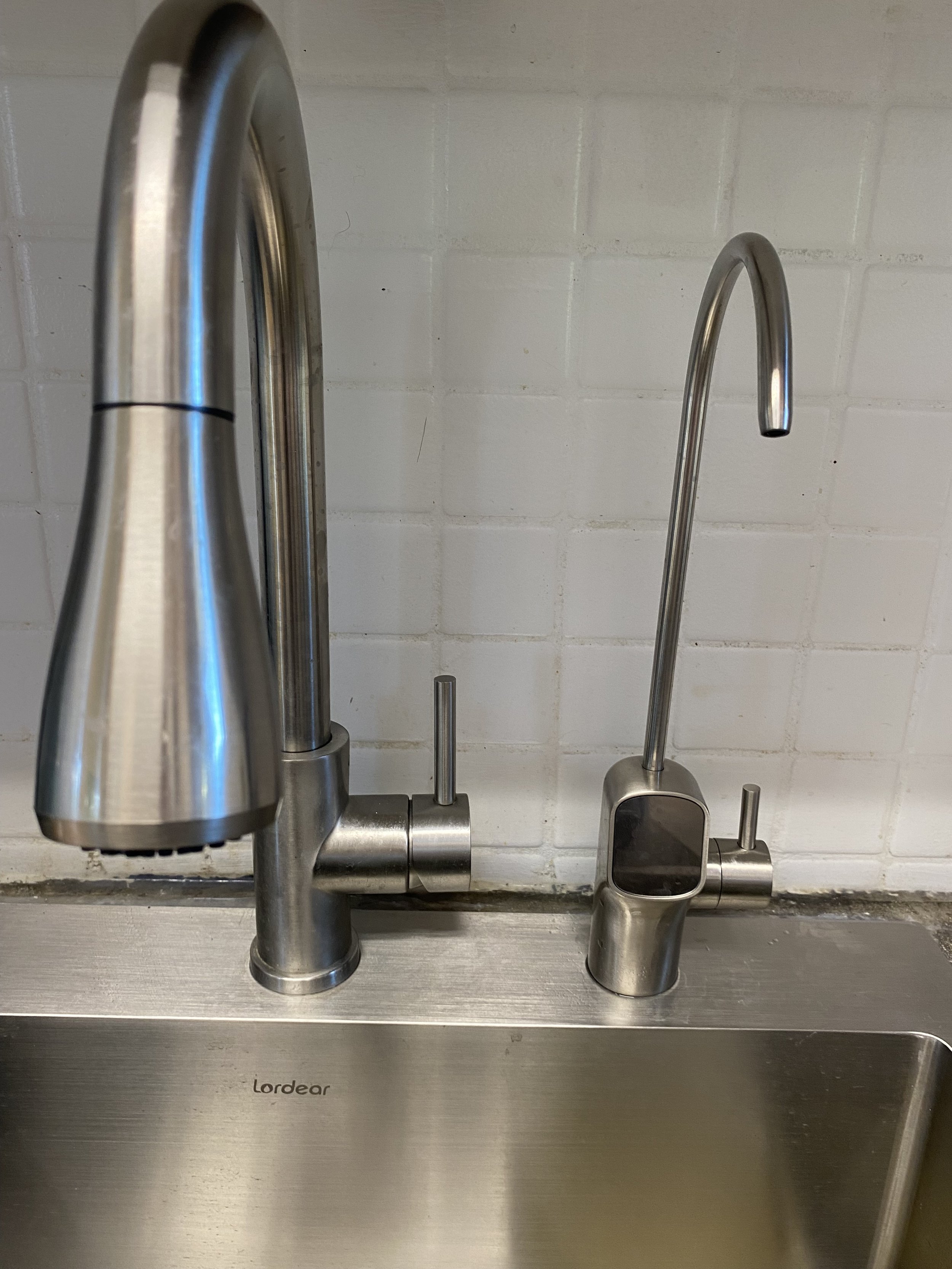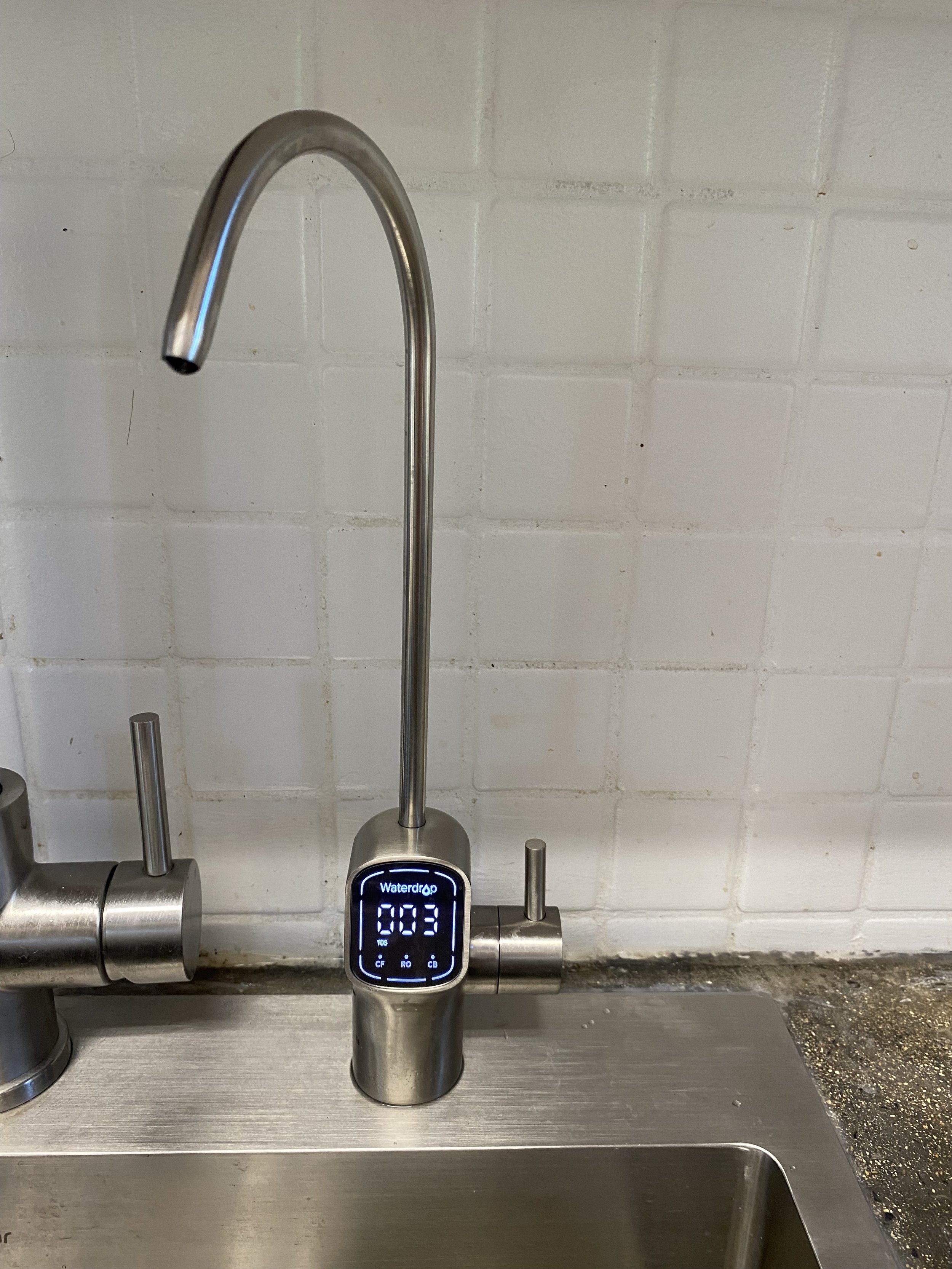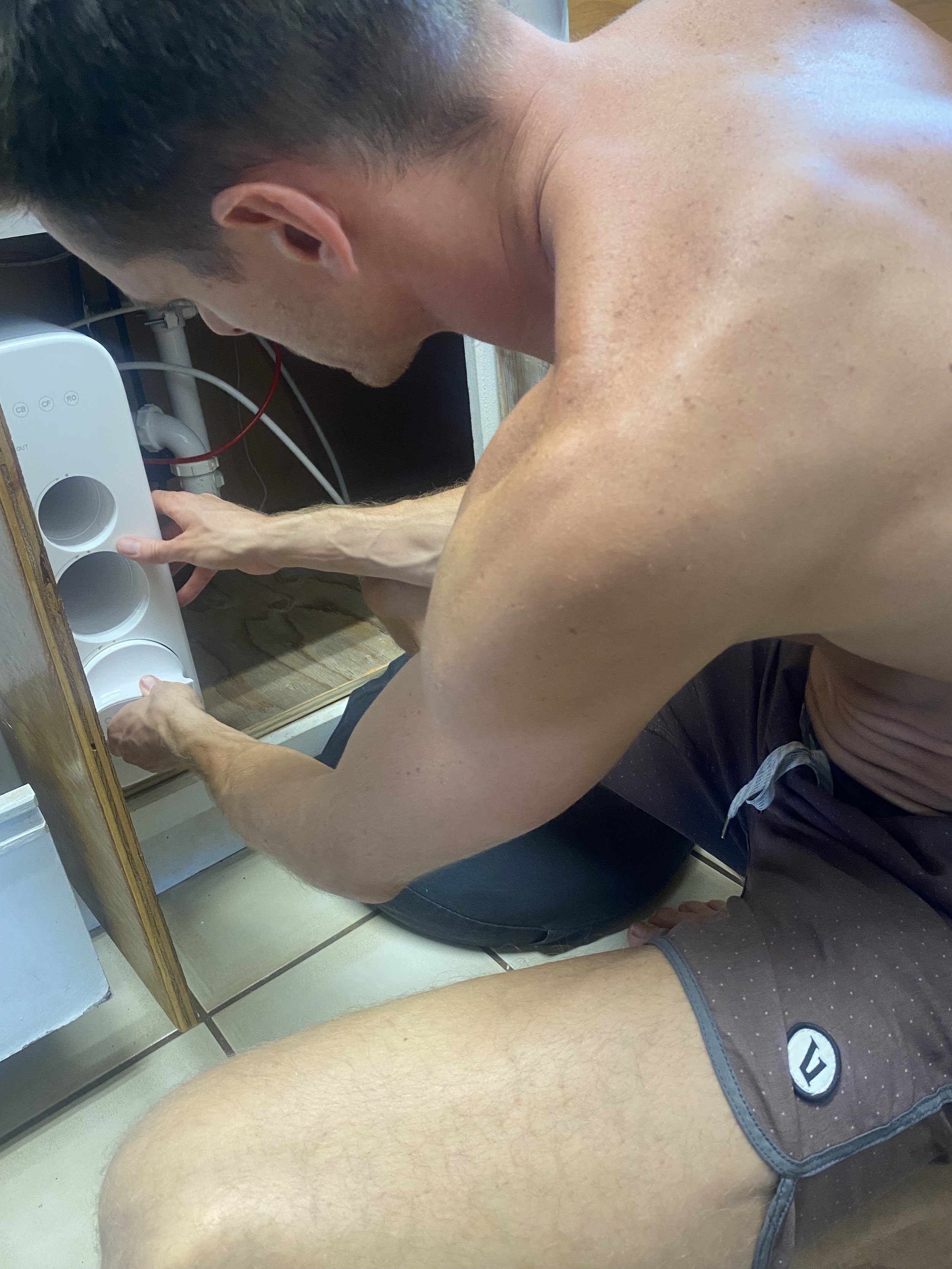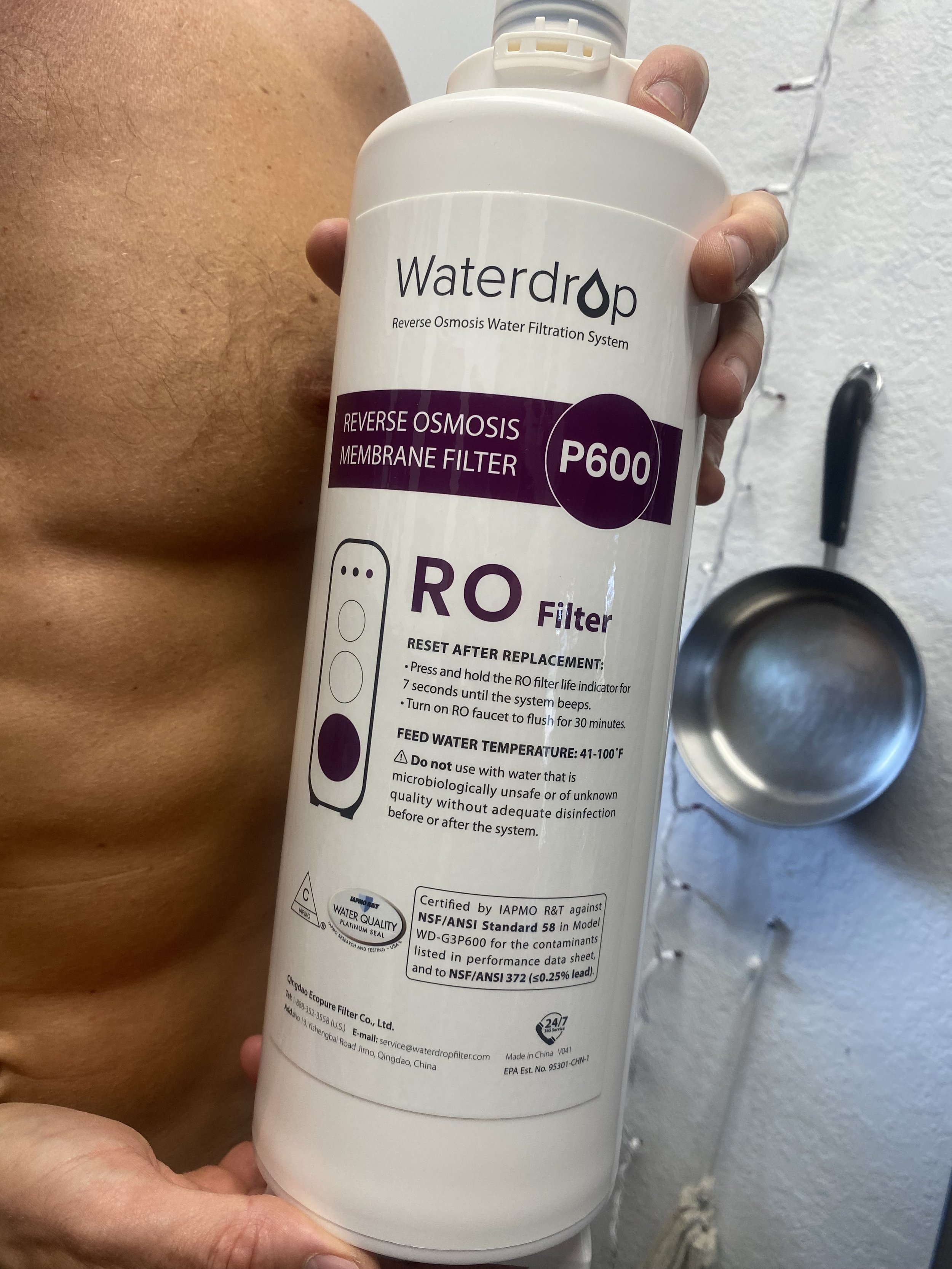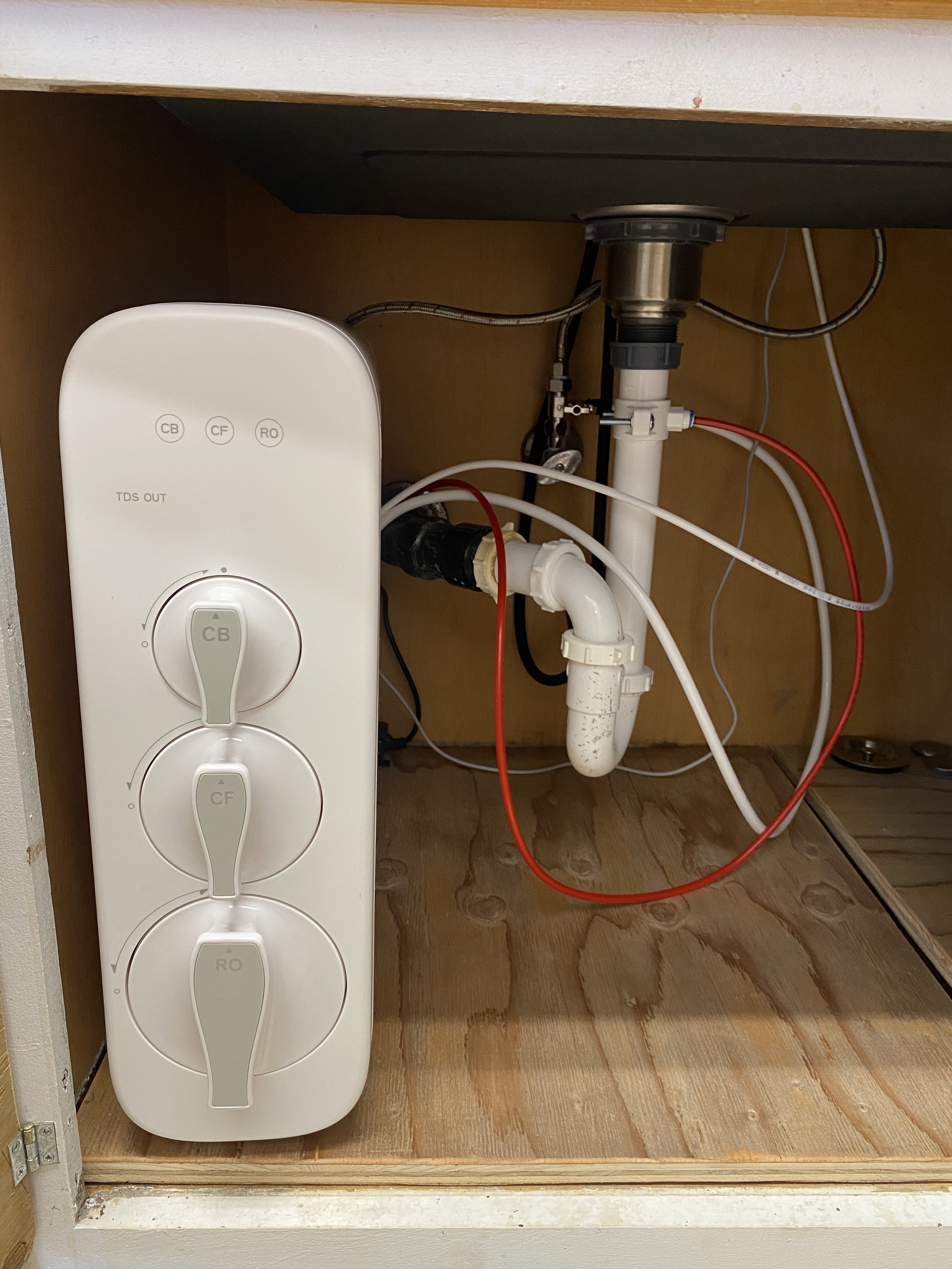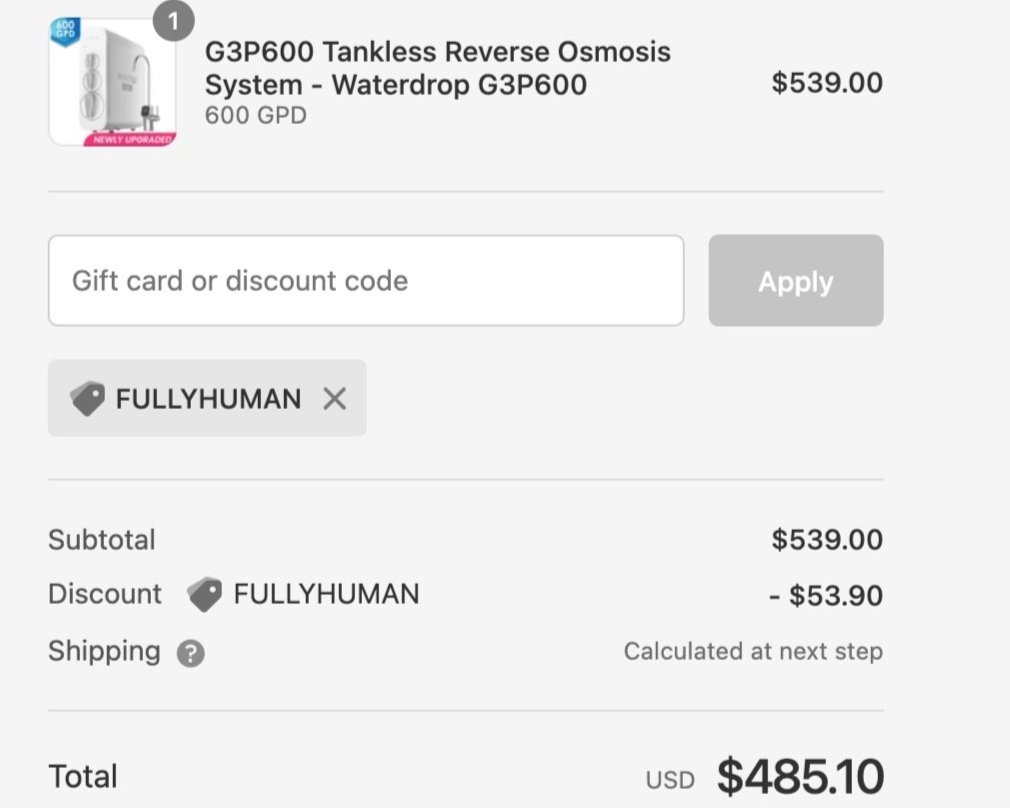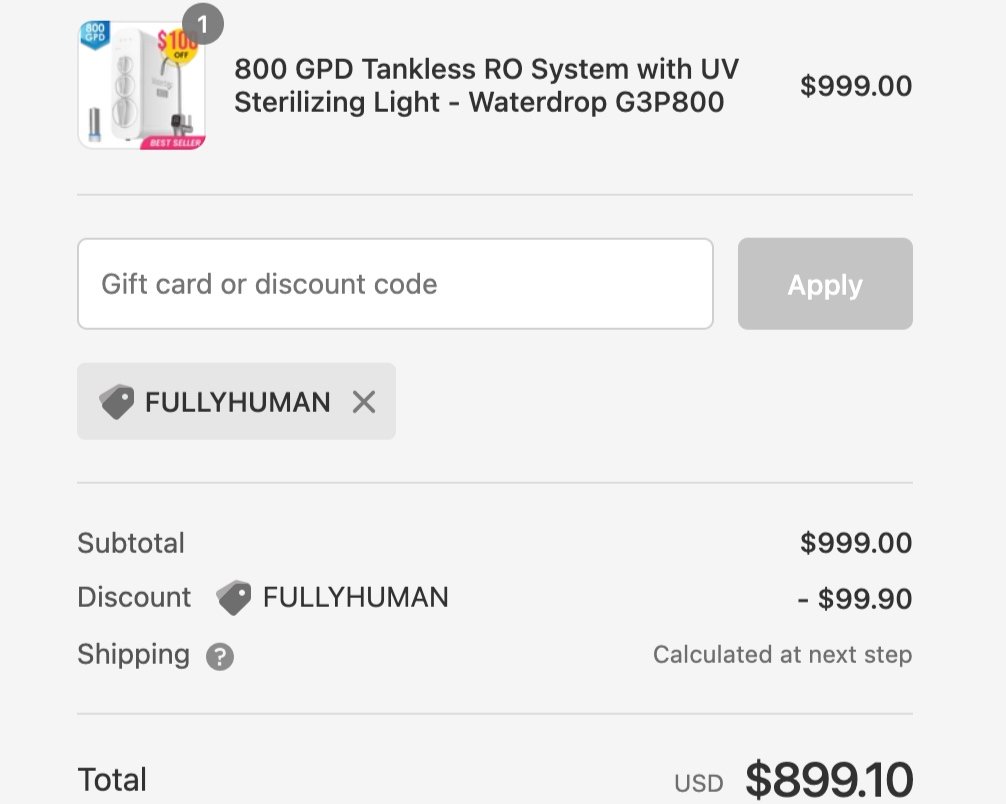The Ultimate Guide to Water Filters
In this article, you’ll learn:
Why I stopped using Berkey and Kangen filters
What ‘quality’ water actually is
The pro’s and con’s of spring and well water
A run-down on water filtration options
The drinking water filter and shower filter I bought (you can skip to the end of the article if that’s all you want to know!)
In today's wellness-conscious society, the humble water filter is being recommended by everyone. Health advocates and influencers regularly endorse the benefits of water filtration, yet it's surprisingly rare to find clear-cut information on the specific products they use and why they've chosen them.
I realized this when my partner and I recently took a deep dive into the world of water filters together. Prior to moving to Austin, I relied primarily on spring water. In Mexico, I would get the big blue jugs (garrafones) delivered to my home (more later on the pros and cons of this). In Australia, I was grateful to be able to often collect my own fresh spring water right from the source. I also bought and used Kangen ionizer for a while (and sold it), and more recently, I was using a Berkey in Austin before recently moving to Hawai’i. So, needless to say: I’ve been around the water filter block, and today I want to share with you all my findings.
Why We Ditched the Berkey Filter
My partner and I have been suspicious about Berkey for a while now. He did a deep dive (there are a lot of apparent 3rd party testing articles promoting the Berkey) when he bought it a while ago. But the fact that it’s near impossible to figure out who the heck owns Berkey (since only re-sellers sell them) makes a product prone to BS claims. The company itself is very hands-off, which makes it hard to discern what is really real.
Various lawsuits are going around claiming Berkey doesn’t filter properly/ anywhere near the claims made by re-sellers. Some consumer studies actually show aluminum levels going up after filtration (and indeed, the filter does contain aluminum, so that adds up). Also, living in a city like we were in Austin: the water is absolutely f’d. I’ll get more into it later on (how and why different filters work), but the reality is that there is no water wastage with Berkey, which makes it only so helpful in actually filtering out small particle contaminants. How can a gravity-fed filter with no water wastage be as good as “gold star” filtration RO machines (many of which require electricity and force through the finest of 8-stage filtration with a membrane technology that requires the use of additional water to clean the filter, which is then discarded), it doesn’t really add up.
The other issue with any countertop filters is that they are slow and relatively annoying to re-fill. We use filtered water for all our drinking and cooking, and refilling the filter would take a lot of time daily.
When we moved to Hawai’i, we decided it was time to update our investigation, and we finally decided on a great water and shower filter.
Water is just too important to mess around with. I think many of us get any filter that satisfies the guilt of knowing how nasty tap water is, but without ever really doing the due diligence to ensure we’ve invested in something that works really well. I understand the struggle of being in a short-to-medium-term home and not wanting to spend a tonne of money on a whole house filter, and hopefully, this guide inspires you to up your water-filter game (or at the very least make better sense of it all!).
Why I Ditched the Kangen
So I purchased the Kangen K8 in about 2016 while living in Australia. I was deep in the Kangen “community” there, living in Bondi. Many people I knew had machines. Local restaurants did too, and health shops. My roommate had a machine, and I fully drank the Kangen Kool-Aid for a while. I eventually got my own machine, and even hosted a few demos at the organic store I was managing at the time.
Kangen is a network marketing company, meaning that after buying the product you can make commissions, by selling them to other people. The commissions become very lucrative the more you sell, ranging upwards of half the machine’s total cost (which is around $4000 USD). What I realized little by little was 1) people are deluding themselves about the quality of products in these environments because they’ve associated financial reward with liking the product. It’s like essential oil companies where people think essential oils do everything and cure anything. We’re human, and we’re not immune to our own BS. I could see how many claims friends were making, all parroting stuff no one really understood.
With the Kangen machine, a big lie is that it’s a great water filter. Kangen is sold as an ionizer, not a filter. The filter it does have built-in is actually pretty shitty. It doesn’t remove fluoride, heavy metals, or pharmaceuticals from the tap water. Paying thousands of dollars not to have that stuff removed seems wild to me.
I ended up installing pre-filters on my machine before ionizing my water, but I also realized that drinking high PH water long-term made no sense. Our stomach needs to be highly acidic to digest food. The guy who ran the Kangen “circle” in Sydney that I was a part of had the worst digestion of anyone I had ever met. He was constantly fasting and doing major elimination diets because his digestion sucked, and I started to wonder if it was because he was guzzling PH9 water all day long.
Finally, I just stopped using the machine because I was intuitively called back to spring water. As we’ll touch on below, there are many different ways to understand water quality. Since the filters were not great on my Kangen, I realized I just craved a blank canvas; the kind you can only get from pure spring water or proper RO water. I wasn’t about to spend another couple grand on an RO machine, so I just started buying jugs of spring water and left my machine to collect dust until I eventually sold it less than a year after buying it.
The Ideal Qualities of Drinking Water
As we journey through the intricacies of water sourcing and filtration, it becomes evident that certain qualities are particularly desirable in the water we consume. Here are the three crucial characteristics I strive for in my drinking water:
1) Cleanliness: Regardless of where our water comes from, it's of utmost importance that it's free from contaminants. In natural water sources, we might encounter bacteria and parasites, while tap water often carries pharmaceuticals, heavy metals, chlorine, fluoride, and other impurities. Thus, effective filtration is crucial to remove these potential health hazards, especially in tap water.
2) Mineral Content: While water is not our primary source of minerals, the minerals present in it play a vital role in our overall hydration and health. Most sources of water today, whether from the tap or a bottle, lack sufficient mineral content for optimal hydration. To combat this, we often need to reintroduce minerals to our water post-filtration. I will explore remineralizing water in another article soon.
3) Structure: Water is more than just H2O. It has a life force, a structure that contributes to its ability to hydrate us effectively. Gerald Pollack's research on the fourth phase of water, also known as 'structured' or 'living' water, illuminates this. But, unless we're drinking freshly sourced spring water, our water is often 'dead' – lacking this vital structure. To reintroduce this life force, we can use various methods I will share about this more in another article soon.
Spring and Well Water Options
Many people understand how nasty tap water is. Before delving into filters, I’ll touch on a few common options people use to avoid tap water.
Fresh Spring Water & Well Water
Freshly harvested spring water holds an array of benefits that make it the gold standard of hydration. Rich in natural minerals, pure and clean, this water has a unique quality often referred to as 'living' or 'structured' water, indicating a distinct phase of water that is quite unlike anything that flows from our taps.
This fourth phase of water, as explored in Gerald Pollack's research, has an almost honeycomb-like molecular structure, resulting in a gel-like substance. Consuming this 'living water' provides our bodies with a level of hydration that surpasses ordinary water, akin to the hydration derived from fresh, water-rich foods like fruits.
However, sourcing water directly from nature has its own set of challenges. While spring water typically flows from aquifers, providing some natural filtration, there's still a risk of contamination. This can range from natural contaminants, such as parasites and bacteria, to human-induced pollutants, like agricultural runoff, pesticides, and herbicides.
It's important to note that well water, in particular, may pose a higher risk in this context. Unlike spring water, which is often sourced from a protected underground source, well water is usually closer to the surface. This makes it more susceptible to both natural and human-induced contamination, especially if the well is located near industrial or agricultural activity.
In summary, while freshly harvested spring water is a rich, hydrating resource that offers a unique form of hydration, care must be taken to ensure it's sourced from a clean, protected source. The need for caution is even greater with well water due to its increased susceptibility to contamination.
When sourcing your own water, it's crucial to have it tested regularly to ensure its safety. This could be as frequent as every few months or at least annually, depending on the source and any potential risks associated with it. These tests typically look for contaminants like bacteria, parasites, pesticides, and heavy metals, which can all pose health risks if present at high levels.
Testing kits are widely available, and local environmental or health departments often offer water testing services. In some regions, there might even be programs in place to provide free testing for specific contaminants. Remember, the quality of natural water sources can change over time due to environmental factors or human activities, so regular testing is essential to make sure the water is pristine.
The ‘living’ (structured) nature of spring water doesn’t last forever. Although there is no set amount of time before it loses its structure, spring water cannot be stored indefinitely and keep this 4th phase of water. In another article, I will explore how to bring back to life (how to structure) water at home, which you can do with spring water or properly filtered water.
Collecting fresh spring water in glass bottles in the Blue Mountains of NSW, Australia. Truly the most magical and authentic way to connect with water.
Bottled Spring Water
Not all spring water holds up to the gold standard, especially when it comes to store-bought spring water. These products are typically packaged in single-use plastic, large hard plastic bottles, or glass bottles. While single-use plastics carry their own set of environmental concerns, they leach a lot of microplastics into the water. Larger (5-gallon) hard plastic bottles fare slightly better but are not entirely exempt from this risk.
Glass bottles, on the other hand, are the safest choice for avoiding plastic contamination. In some countries like Germany, buying spring water in returnable glass bottles is made convenient, promoting a more sustainable and health-conscious approach.
Yet, a big issue remains: irrespective of the packaging, store-bought spring water is essentially "dead water." Legal filtering requirements for selling spring water strip it of its raw, vibrant qualities. So if you can access spring water in glass bottles, you’re in pretty good shape— but this expensive choice still requires re-vitalizing the water, probably with minerals and definitely in terms of structure.
Note on the big water jugs: these are not always spring water. In Mexico, many of the “garrafones” were actually chemically treated water (ie. the equivalent of American tap water). This is because the drinking water in cities like Oaxaca can be contaminated with bacteria and parasites, so the alternative option was “tap water” delivered to you. It was possible to source spring water, but it’s not a given. This is the same case in modern cities! In big grocery stores, many of the big bottle refills use reverse osmosis, so it’s important to investigate the quality of the filter they use. Many big bottle options in the U.S. also sell simply filtered water, which can be just as nasty as tap water. Do your research, and investigate if you’re indeed buying spring water or not!
Comparing Different Kinds of Water Filters
Navigating the world of water filters is like wading through a frikken swamp. Who the heck do you believe these days? People either just push a product, or worse, they’ll tell you to get a filter with no advice on which one they use.
Before we get to the actual brand I bought, I wanted to share a comprehensive analysis of some of the top types of water filters, exploring factors like cost, water wastage, filtering capabilities, the potential introduction of toxins, and ease of installation.
Types of Filters
Gravity-fed Filters (Counter Top/ Pitchers): These systems function without electricity, making them excellent for emergencies or camping. They use gravity to push water through filter elements like carbon, hollow fiber, or ceramic, trapping contaminants along the way. These are very popular because they are portable; generally, they’re cheaper. If you are in a short-to-medium-term home, people usually buy this. Other gravity filters are pitcher-shaped and stored in the fridge (like the Brita filter).
However, some gravity filters, including Berkey and Brita, have been accused of introducing aluminum into the water – a concern worth investigating before purchase. The filters typically aren’t great, and if you really want proper filtration, you usually need added filters (like Berkey, which has add-on fluoride filter attachments).
Faucet-attached Filters: Installed directly onto your faucet, these filters are user-friendly and effective for improving taste and removing common contaminants. They usually use activated carbon filtration and are relatively cheap. However, their filtration capacity is not as comprehensive as some other types. This kind of filter would be fine to install on a bathroom sink if you’re going to use it to wash your face. Great at eliminating chlorine and simple VOCs, but I wouldn’t rely on these cheap little sink add on’s for drinking water.
Refrigerator Filters: Generally utilizing activated carbon technology, refrigerator filters improve the taste and odor of water, similar to basic carbon filters. They're often effective in reducing chlorine and certain other contaminants. However, their filtration capabilities are limited, and they're not designed to deal with heavy metals, fluoride, and a range of other potential water pollutants.
Like any other carbon-based filter, their effectiveness heavily depends on the quality of the carbon used, and poor-quality filters may inadvertently introduce contaminants. Plus, they need to be replaced regularly - generally every six months or so. Though they come with the convenience of chilled, filtered water directly from your fridge, it's important to remember that these filters are fairly basic and aren't equipped to deal with serious water quality issues.
Under-sink Filters with Second Faucet: Installed under your sink, these filters have a higher capacity than faucet-attached ones and offer a wider range of filtration methods, including reverse osmosis. Basically, you have a filter hidden under the counter and a second (small) faucet that comes up out of the sink to provide clean water. They're generally more expensive and require professional installation, but newer, more affordable, and easier to install models are becoming available.
Whole-house Filters: These systems filter all the water entering your house, making them ideal for comprehensive water treatment. They're typically used to remove sediment and rust but can be paired with other systems for more thorough filtration. However, they're costly and necessitate professional installation.
How the Filtration System Actually Works
Activated Carbon Filters: These common devices absorb impurities in the water, improve taste, and remove odors. This is typically the kind of filter you will have in a gravity-fed and fridge filter. They excel at eliminating chlorine and some volatile organic compounds. However, they can't filter out minerals or dissolved inorganic substances (like pesticides, pharmaceuticals, fluoride, or heavy metals). Their affordability and easy installation make them a go-to choice for many. Not all carbon filters are created equal, and some can inadvertently introduce toxins like aluminum into your water, like (allegedly) the Berkey and Brita filters.
Ceramic Filters: Primarily used in gravity-fed filtration systems, ceramic filters are a popular choice for their natural, simple, and effective approach to water purification. Water seeps through the porous ceramic material, which acts as a physical barrier to bacteria, parasites, and sediment. Because the pores are much larger than the molecular size of most chemical contaminants (like chlorine, heavy metals, and pharmaceuticals), these filters aren't effective at removing such contaminants.
Increasingly these ceramic filters are laced with silver to enhance their antibacterial and antiparasitic effectiveness or incorporate an activated carbon core to improve the removal of chemical contaminants. Their longevity and ability to be cleaned and reused make them an environmentally friendly and cost-effective option. Bear in mind that, similar to carbon filters, not all ceramic filters are equal - some may inadvertently introduce contaminants, depending on the quality and type of materials used.
Reverse Osmosis Filters: Reverse Osmosis, or RO, is a process where water is forced through a special, semi-permeable membrane under pressure. This membrane allows water molecules to pass through but blocks larger particles, such as minerals, heavy metals, bacteria, viruses, and other common contaminants like fluoride. It's a bit like a super fine strainer that only lets the water itself get through. Water is “wasted” with RO machines because of their membrane technology that requires the use of additional water to clean the filter, which is then discarded.
It's possible to repurpose waste water from reverse osmosis for tasks like mopping floors, washing dishes, flushing toilets, and pre-soaking laundry. You should, however, avoid consuming this water as it generally contains a higher concentration of contaminants compared to purified water. To do this, you divert the so-called "waste" water into a bucket placed under your sink.
The RO effectively cleans the water, making it a blank canvas, which is also one of the chief complaints people have: because the membrane also catches beneficial minerals, RO water can end up being less hydrating than other sources unless those minerals are added back in after the filtration process. Most RO machines come with a remineralization step, but I don’t actually recommend getting that. I would rather wipe the water completely and then know exactly what (and in what quantities) I am putting back into my water. As previously discussed, no tap water is truly mineral-rich enough to be hydrating. So the whole “RO strips water from minerals” is really a null argument.
While they excel in water purity, they are typically harder to install, more expensive, and waste a considerable amount of water during filtration. Newer RO technology is coming out that wastes less water and is also easier to install.
Distiller: Distilled Water is the vapor of boiled water. Making distilled water involves boiling the water; the heat turns the water into vapor, which is then condensed in the upper part of the distillation unit and transferred into a clean water container. As the debris and contaminants are heavier than water particles, they’re left at the bottom of the heating element. This water is void of minerals (and toxins!) and must be remineralized before consumption. The biggest drawback is how slow the process is.
Alkaline/Water Ionizers: Utilising a process called electrolysis, these devices separate water into alkaline and acidic streams, increasing its antioxidant potential. These machines are typically pricier and are not always actual filters. The Kangen is such a machine, and I will share more about. my purchasing (and eventually selling) the Kangen machine and why. There is a lot of science that hydrogen-rich water is health-promoting, but ionizers are not actually water filters, so the Kangen (for example) has one basic filter that removes very basic impurities but does nothing to the smaller particles from heavy metals, pharmaceuticals, fluoride, etc.
These machines are typically thousands of dollars and sold like the “magic bullet” to health. I hate to burst the bubble, but there is no magic solution to health. If a water machine is going to be thousands of dollars, it’s disturbing not to have it be a fantastic filter for pollutants. The hydrogen is (possibly) a fun add-on, but it’s not my priority regarding water quality.
UV Filters: UV filters kill bacteria and other microorganisms using ultraviolet light. They're great for eliminating biological contaminants but fall short on non-biological ones. These filters are cost-effective and don't waste water, but they require electricity to function. They’re ideal if you drink living water (like spring or well water) and aren’t sure about bacterial exposure.
Infrared Filters: A relatively new player in the game, these filters soften hard water by using heat and light to negatively charge it. Their installation can be a bit tricky, but if hard water is your main concern, they're worth considering.
The Water Filter I Bought (and Why)
G3P600 Tankless RO System
This filter stole the show for us. It ticked the boxes of quality, ease of installation, good price, and speed of filtration.
If you decide to get a Waterdrop filter you can also use code ‘FULLYHUMAN’ for a bangin’ added discount!
The moment of truth! So we purchased the G3P600 Tankless RO System Waterdrop filter. After researching all types of filters, we narrowed it down to the G3P600 and the G3P800 models, both from Waterdrop. Let’s explore their similarities and differences and why I think these are the best water filters on the market today based on price, quality, speed, ease of installation, and overall water wastage.
Filtration Quality
So, first of all, things in common between the two are their primary filtration processes. These machines use RO technology that is certified with all the fancy labels (you can see WD-G3P600 RO system test results for specifics). But long story short, both models have the base 8-stage Filtration that has been tested by an official third-party laboratory (SGS), with a filtration accuracy of 0.01 μm, which takes care of a huge range of toxins ranging from chromium, PFAS, fluoride, arsenic salt, iron, radium nitrate, calcium, particles, chloride, chlorine, and heavy metals like hexavalent chromium in your tap water.
There is an option for getting the remineralization filter at the end, but we opted not to do this. I prefer knowing the source and quality of the minerals we add to our water, and I am in the process of crafting (with the help of a kinesiologist) the “perfect” mineral blend to add back to the water after it’s filtered. I will share it once I finish that, but for now, we add a pinch of sea salt and a pinch of potassium (we use THIS potassium supplement).
The G3P800 has one added filter at the end: a UV filter. As I explored above, UV filters are for bacteria and viruses, which seems redundant since the RO machines don’t work for well water.
The problem with tap water is two-fold:
1) The chemicals used to remove potentially harmful bacteria and pathogens are also toxic to humans. This includes additives like chlorine, and fluoride. This removes the need for a UV filter found in the 800 model.
2) The plants that “clean” water using things like chlorine don’t address the slo of other toxins found in tap water that made their way into the system (like heavy metals, VOCs, and pharmaceuticals). Both models address this problem.
Because of this, the G3P600 was the ideal “filter” for us, since the UV filtration didn’t actually appeal to us at all.
2. Ease of Installation
Ease of installation is important since we’re in a medium-term home. Many RO machines require a plumber, who actually has to change the configuration of the pipes to account for the discarded water. RO splits the water, and the pollutants are discarded with the wastewater. Most under-the-sink RO machines are more of a long-term housing investment since plumbers add a couple of hundred dollars to the cost of your filter, and again if you leave and need to re-plumb the sink to remove the filter.
My partner (who has no plumbing experience) actually swapped out our kitchen sink when we moved in. The old sink was broken and needed upgrading anyways, so we purchased a sink with a little opening for a filter spout. We got THIS sink, which I absolutely love (who knew you could love a sink!!). If you don’t want a new sink, WaterDrop gives instructions on how to drill the hole to fit the faucet, which probably requires either hiring someone or hiring the tool to do it properly. Not a major problem either way. They have little metal plugs to ‘cap’ the hole if you move out. Overall that’s a really simple process.
So yeah, the filter took a few hours to install under the sink, but the instructions are very by the book. My partner watched the youtube step-by-step (which you can see HERE), and then the three filters just slid into the machine. Swapping them out when they need to be changed is the easiest process ever (just twist and pull, then push new ones in and twist).
Both the G3P600 and the G3P800 have the same installation process, so it was a tie in this department.
You can see our old sink when we first moved in. We replaced it with a new sink and faucet, plus the water filter (that goes beneath the sink) and the RO faucet (which is the small one to the right of the sink faucet)
Our Kitchen Sink / Water Filter Set up
Sink head: Kitchen Faucet with Pull Down Sprayer
Sink: 25 Inch Drop In Kitchen Sink Stainless Steel
Water filter: G3P600 Tankless RO by Waterdrop
3. Speed
There is a minor difference in filtration speed between the G3P600 and the G3P800 filters. Both have a decent flow rate, especially considering there is no tank associated with either machine! This means water anytime without ever needing to wait for the tank to fill (like in gravity-fed filters or RO machines that have tanks).
the G3P600 fills an 8 oz cup with water in 8 seconds,
the G3P800 fills an 8 oz cup with water in 6 seconds
Is this a huge difference? Not really. However, if you have a big family, it would add up over time. The G3P800 won in this category, nonetheless.
4. Water Wastage
So most RO filters waste 1:1 water. That’s not ideal, but we would be willing to pay that cost for clean water. Luckily, the Waterdrop filters have a much better ratio. The machines differ in this department, with the G3P800 having significantly less waste.
the G3P600 has a 2:1 output (2L of clean water for every 1L of waste)
the G3P800 has a 3:1 output (3L of clean water for every 1L of waste)
The G3P800 clearly won in this category and was the reason we almost got this filter instead. We acknowledge in the future, when we use more water (pretty much when we have kids), things like speed and water wastage will make a bigger difference. In time we would invest in the faster, less waste G3P800 model.
Remember: It's also possible to repurpose waste water from reverse osmosis for tasks like mopping floors, washing dishes, flushing toilets, and pre-soaking laundry. You should, however, avoid consuming this water as it generally contains a higher concentration of contaminants compared to purified water. To do this, you divert the so-called "waste" water into a bucket placed under your sink. We don’t do it, but, you could!
5. Price
How affordable a water filter is will really depend on your value system. We will always justify financially what we value or what is most important to us. When it comes to water, quality is really important to my partner and me. This is one of the reasons we decided to no longer use our gravity-fed Berkey because we stopped trusting the quality. RO is undoubtedly the best at filtering the smallest contaminants, but they’re often super expensive (and hard to install). This is why we loved Waterdrop because they have tankless and easy-to-install machines that are more of a mid-range price, making it more accessible to more people.
With the added ‘FULLYHUMAN’ discount, our G3P600 was $485.10 (which is actually on par with the cost of gravity-fed filters like the big Berkey).
You can also use discount code ‘FULLYHUMAN’ for a great discount on any Waterdrop filter!
Which includes free (mainland) US shipping.
Onto the shower filter…
So since we just moved into a new place, we also decided to do the deep dive on a shower filter. We used a cheap Amazon filter in the past, but it was bad. Within weeks the water would smell of chlorine again, and there was no way any of their claims about how long the filter lasted were legit. This is especially true living in a big city (like when we were in Austin, Texas).
I totally get the desire not to spend a lot on these things, but it ends up being a huge waste long-term, not only because bad filters need to be replaced more often but also because they straight up don’t work well. Enough was enough, and we decided to just invest in the best shower filter we could find. Honestly, it was less expensive than I thought it would be.
*UPDATED SECTION* I found a new shower filter company that produces the same style of water filter, but at a better price, and with (significantly) more affordable replacement filters.
Weddell Duo Shower Filter
This shower filter caught my eye on a website that had 3rd party tested a bunch of popular shower filters, to compare the claims vs reality of their filters. Many filters on the market make grandiose claims, that don’t match up with the quality of their product, and Weddell’s Duo shower filter actually did. It’s not the cheapest on the market, but it’s also not the most expensive. The key is to purchase from their website if you want the best price, as they have bundles (filter + replacement filters, as well as bulk buying of replacement filters) that have savings, plus you can add the “fullyhuman” discount code to save even more (shipping is always free).
Key selling points:
The Weddell Duo has an NSF certification to Standard 42 for chlorine reduction and 3rd party testing shows it removes 100% of chlorine
It also removes disinfection byproducts, likely because it’s one of the rare filters that has a solid carbon block filter
They don’t claim to reduce hard water (which most filters do claim, and this is almost not possible with a shower filter.. I don’t know of any that actually do)
Easy installation (less than 5 minutes)
Affordable for how well it works, and replacement filters are affordable and can be purchased in bulk
The first image is the 3rd party test of water quality unfiltered, and the second image shows the before (blue) and after (yellow) of the Weddell shower filter. Note that no yellow appears in 2nd image because the filter worked.
You change the filter replacement every 5-6 months for optimal performance, which is made affordable by their filter bundles (this is 3 years’ worth of replacement filters). I genuinely love the honesty of this company- the previous company we used said yearly replacements but in reality we noticed the other filter stopped working well around the 6-month mark.
Click the photo to be taken to the product page—
Our Full Shower Setup:
I love shower time; who doesn’t? No matter how busy life may be for you, everyone showers, and making the shower experience as pleasant as possible is an opportunity to build this little mini oasis for you to enjoy every day. We are tall humans (my partner is over 6ft, and I’m nearly there at 5’11), so we bought a shower head extender to raise the shower head. This might be a good idea no matter your height, though, because adding a filter to your shower will lower it! We also got a new rainfall shower head. So our shower setup goes: filter, extender, shower head.
The filter: Weddell Duo Filter (save even more with code ‘fullyhuman’)
The extender: Shower Head Extension Arm
The shower head: High-Pressure Shower Head, 8 Inch Rain Shower Head

